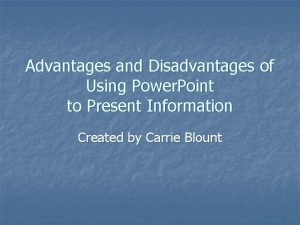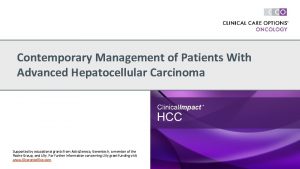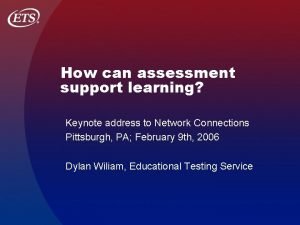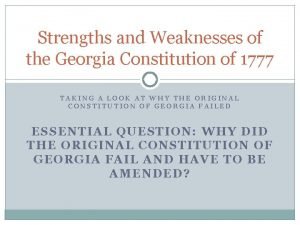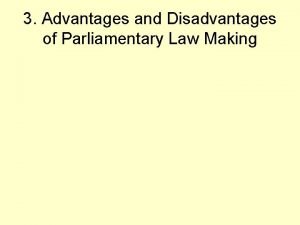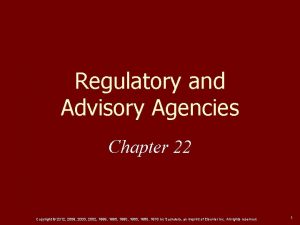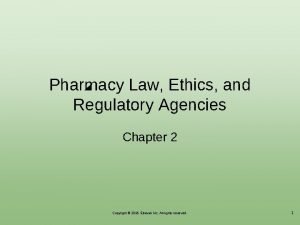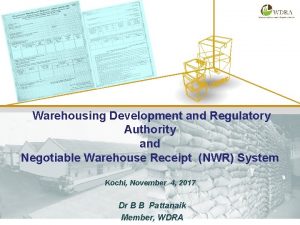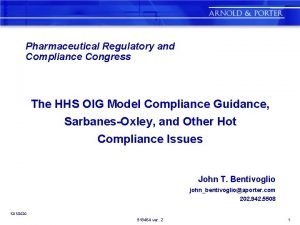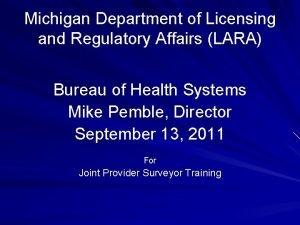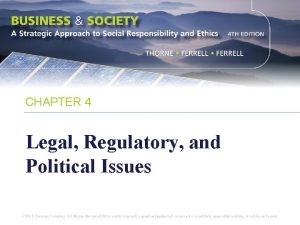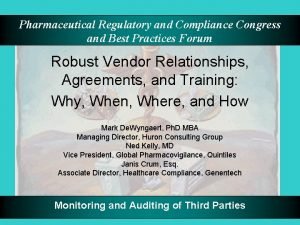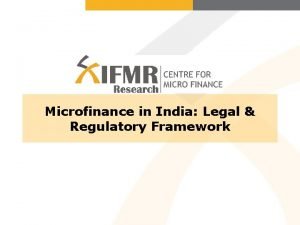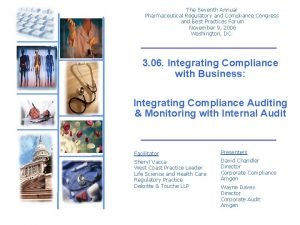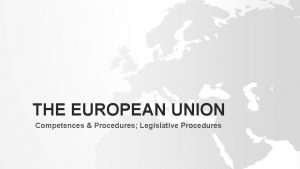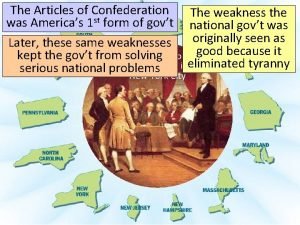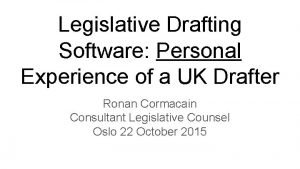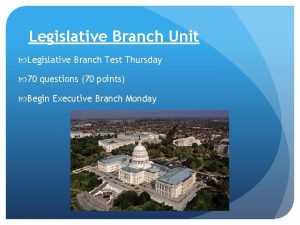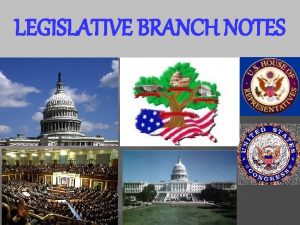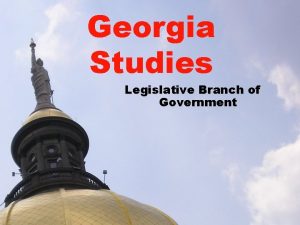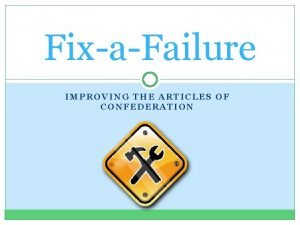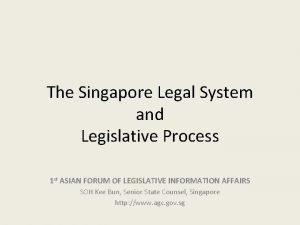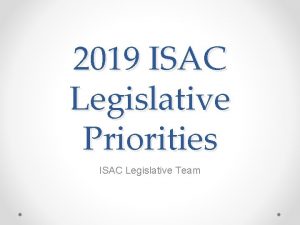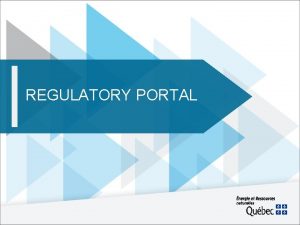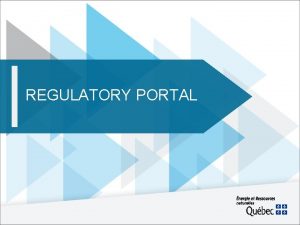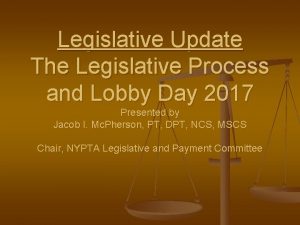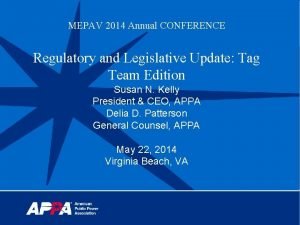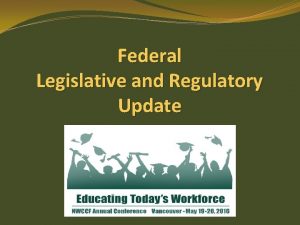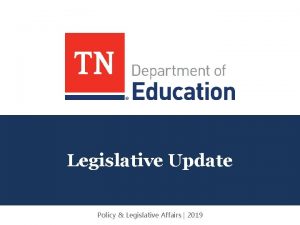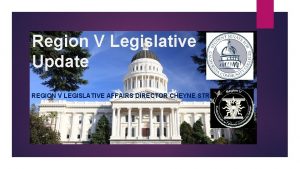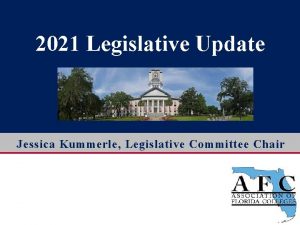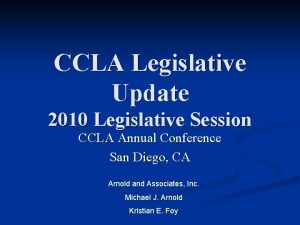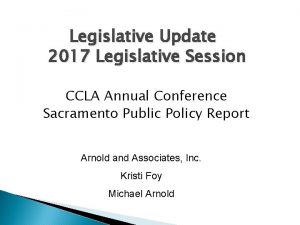Keynote Legislative and Regulatory Update Find Out What










































- Slides: 42

Keynote: Legislative and Regulatory Update – Find Out What You Don’t Know Marcia S. Wagner, Esq. Founder The Wagner Law Group

INTRODUCTION • • • State fiduciary regulation. Retirement Savings Lost and Found Act of 2018. Automatic Retirement Plan Act of 2019. Retirement Plan Modernization Act. Retirement Enhancement and Savings Act of 2019. Retirement Parity for Student Loans Act.

INTRODUCTION • • Employer Participation in Student Loan Repayment Act of 2019. Tax Reform 2. 0. Retirement Security Act of 2019. Retirement Plan Simplification and Enhancement Act. SIMPLE Modernization Act of 2019. Rehabilitation for Multiemployer Pensions Act. Universal Savings Accounts. DOL proposed regulations on multiple employer defined contribution plans. • Multiemployer pension plans remain a complex problem, but legislation has been introduced.

STATE FIDUCIARY ACTIVITY • In absence of federal fiduciary guidance, states have taken action. • Nevada has issued, and New Jersey is about to issue, proposed regulations. – Lesser activity by Connecticut, Maryland, and New York. • SEC guidance on Regulation Best Interest may preempt state action. • If applied to employee benefit plans under ERISA, proposed regulations are probably preempted.

STUDENT DEBT PRIVATE LETTER RULING • One reason that it is difficult for many younger employees (and their parents) is the significant amount of student debt. • In Private Letter Ruling 201833012, the IRS addressed how retirement contributions could be based on student loan repayments.

RETIREMENT PARITY FOR STUDENT LOANS ACT (RPSLA) • RPSLA intended to make the option described in the 2018 private letter ruling more generally available. • Applicable to 401(k), 403(b), and SIMPLE plans. • Only employee higher education loan repayments would qualify for employer contributions. – Loans for private secondary or elementary expenses would not be covered.

RPSLA • Employer contributions matched to student loan repayments cannot exceed annual deferral limit applicable to the plan (including catchup contributions) reduced by an employee’s elective deferrals. • All amounts together cannot exceed the employee’s compensation. • Employees must verify they have made student loan repayments. – This is an administrative complexity, because student loan repayments are not a payroll item.

RPSLA • Only employees eligible to defer into an employee’s retirement plan can receive student loan matching contributions. • All employees who are eligible to receive retirement plan matching contributions must be eligible to receive student loan matching contributions. • For purposes of benefits, rights, and features testing, employees who have no student loan debt would not be considered as having been denied a benefit, right, or feature. • Matching contributions on student loans would not affect the avoidance of nondiscrimination testing under safe harbor 401(k) plans.

EMPLOYER PARTICIPATION IN STUDENT LOAN REPAYMENT ACT OF 2019 (EPSLRA) • EPSLRA would permit employers to provide students with a $5, 250 dollar annual pre-tax payment for student loan indebtedness. • Tax Reform 2. 0 would have modified Code Section 529, Qualified Tuition Program, to cover student loan repayment.

DOL RECENT OPEN MEP GUIDANCE • DOL proposed regulations to expand availability of multiple employer defined contribution plans by removing certain DOL imposed limitations. – The proposed regulations are based on the DOL’s final regulations for association health plans. • A bona fide group or association of employers and a bona fide professional employer organization are deemed to act in the interest of an employer if certain conditions are satisfied. • Working owners are treated as both employers and employees and allowed to participate.

REQUIREMENTS FOR BONA FIDE GROUP OR ASSOCIATION OF EMPLOYERS • Seven requirements to be a bona fide group or association of employers. – Primary purpose may be to offer and provide MEP coverage to employer members and their employees. – Group or association must have at least one substantial business purpose unrelated to offering MEP benefits to its employees.

REQUIREMENTS FOR BONA FIDE GROUP OR ASSOCIATION OF EMPLOYERS • Each employer member of the group or association participating in the plan is a person acting directly as an employer of at least one employee who is a participant covered under the plan. – For this purpose, a working owner can be treated as both employer and employee. • The group or organization has a formal organizational structure with a governing body and has by-laws or other similar indications of formality.

REQUIREMENTS FOR BONA FIDE GROUP OR ASSOCIATION OF EMPLOYERS • The functions and activities of the group or association are controlled by its employer members, and the group’s or association’s employer members that participate in the plan control the plan. – Control must be present in both form and substance.

COMMONALITY OF INTEREST • The employer members have a commonality of interest. – Employer members of a group or association have a commonality of interest if: • The employers are in the same trade , industry line of business or profession, and • Each employer has a principal place of business in the same region that does not exceed the boundaries of a single state or Metropolitan area. – Metropolitan area may include more than one state.

COMMONALITY OF INTEREST • The group or association does not make plan participation through the association available other than to employees and former employees of employer members, and their beneficiaries. – For this purpose, working owner can be treated as both employer and employee. • The group or association can not be a bank or trust company, insurance issuer, broker-dealer, or other similar financial services firm, or owned or controlled by such an entity or any subsidiary or affiliate of such an entity.

BONA FIDE PEO REQUIREMENTS • Requirements to be a bona fide PEO less stringent than requirement for bona fide group or association of employers. • Most PEOs will satisfy these requirements. • PEOs have been offering multiple employer 401(k) plans for some time, and DOL has not pressed enforcement.

CONGRESSIONAL ACTION AND OPEN MEPS • The Retirement Enhancement Savings Act (RESA) contains the most detailed set of rules. • Current DOL position (disregarding proposed regulations) do not prohibit open MEPs, but rather disallow simplified reporting and disclosure. • Proposal would provide for pooled employer plans, or PEPs. – Analagous to DOL’s association health plans. • Would eliminate the “one bad apple” rule that an act disqualifying one plan disqualifies all plans participating in the MEP.

CONGRESSIONAL ACTION AND OPEN MEPS • If PEP covers fewer than 1000 participants, it can file a single Form 5500 with the DOL, if no participating employer has 100 or more employees. • PEP must be run by a pooled plan fiduciary, who will be named fiduciary and 3(16) plan administrator. • Bank trustees who are not participating employers must ensure contributions are collected and remitted. • PEPs cannot impose unreasonable restrictions, fees, and penalties. • Employers remain responsible for the prudent monitoring and appointment of the pooled plan provider and other named fiduciaries.

CONGRESSIONAL ACTION AND OPEN MEPS • Participating employers also responsible for investment selection and monitoring if not otherwise the responsibility of the pooled plan provider or another named fiduciary. • Representative Neal’s Automatic Retirement Plan Act would also address open MEPs. • Would eliminate the one bad apple rule―Open MEP could relieve an employer of not more than 100 employees of all fiduciary and administrative responsibility (other than passing on contribution amounts and providing needed information to designated plan provider). – Provision has been challenged as too great a lowering of participating employer’s fiduciary responsibility.

CONGRESSIONAL ACTION AND OPEN MEPS • The designated MEP provider must: – Receive no more than reasonable compensation; – Agree to assume all fiduciary responsibility not retained by the employer; and – Notifies the employers of their obligations under the MEP. • The Retirement Security Act of 2019 introduced by Senators Collins and Hassan would also provide for open MEPs.

RETIREMENT SAVINGS LOST AND FOUND ACT • Employers would be required to report “forced transfers” to IRS. – Forced transfers occur when (a participant has left employment and cannot be found or participant did notify plan where his account should be sent). – If participant’s account balance is $1, 000 or less, and he or she has not elected to receive it or cannot be located, amount can be transferred to Director of Retirement Savings Lost and Found or to an IRA established by Secretary of Treasury. – If account balance or value of accrued benefit is between $1, 001 and $5, 000, amount can be transferred to an IRA.

RETIREMENT SAVINGS LOST AND FOUND ACT • Dollar cap on forced transfers would be increased from $5, 000 to $6, 000. • Employers would report forced transfer information to IRS.

RETIREMENT SAVINGS LOST AND FOUND ACT • One attempt to contact the individual at the last known address by certified mail or by electronic email if that is only address on record. – If the first attempt to contact the individual was by mail and was unsuccessful, one additional step is required. – If the first attempt to contact the individual was by electronic email, 2 additional steps are required. – If these measures were taken, there would be no required minimum distribution violation if participant could not be located by his/her attainment of age 70 -1/2.

PROTECTING TAXPAYERS ACT • Except as otherwise provided in regulations, all inadvertent plan violations may be selfcorrected without IRS.

PROTECTING TAXPAYERS ACT • Any plan loan violation that is corrected through the use of an IRS approved safe harbor would be treated as meeting the requirements of the DOL’s Voluntary Fiduciary Correction Program. • IRS would be directed to expand EPCRS to cover inadvertent IRA errors for which the IRA owner is not at fault. – Ex. -waiver of the excise tax for failure to satisfy required minimum distribution provisions. • IRS would be permitted to waive excise taxes if an inadvertent required minimum distribution failure is corrected by plan or IRA custodian within 180 days.

OMNIBUS PENSION RELIEF • The three major bills presently under consideration are RESA, the Automatic Retirement Act of 2019, and the Retirement Plan Simplification and Enhancement Act (RPSEA). Some highlights of these Bills include: – Modifying the nondiscrimination requirements for soft frozen defined benefit plans; and – Providing benefits for part-time employees credited with at least 500 hours of service in 3 consecutive years. • Gig workforce issues not addressed in these proposals.

OMNIBUS PENSION RELIEF • • – Repealing law prohibiting contributions to a traditional IRA after attaining age 70½. – Extending of time for adopting a new tax qualified plan. Provisions facilitating rollovers by nonspouse beneficiaries. Deferring the commencement date for required minimum distributions. Updating the mortality tables for determining required minimum distributions. Excluding account balances below a specified dollar amount from required minimum distributions.

OMNIBUS PENSION RELIEF • Simplification of Code Section 402(f) Notice. • Expansion of EPCRS. • Clarification of ESG rules to reflect Democratic party view.

OMNIBUS PENSION RELIEF • • • Reform rules applicable to qualified longevity annuity contracts. Provide for the portability of lifetime income options. Provide for de minimis 401(k) plan incentives. Direct Treasury and DOL to consolidate 401(k) plan notices. Provide for benchmarking of target date funds. Limit the situations in which plans could take action to recoverpayments. • Extension of the due date for funding a defined benefit plan to coordinate with filing of employer tax return. • Provide safe harbor for selection of annuity provider in defined contribution plan.

SIMPLE MODERNIZATION ACT OF 2019 • Introduced by Senators Collins and Warner. • Would raise the contribution limits for SIMPLE plans from $13000 to $16000 for employers with 1 -25 employees. – Contribution level halfway between current SIMPLE limit of $3, 000 and 401(k) limit of $19, 000. • Increase in catch-up contribution from $3, 000 to $4, 500. – Again, halfway between current SIMPLE limit of $3, 000 and 401(k) limit of $6, 000.

SIMPLE MODERNIZATION ACT OF 2019 • Employers with 26 - 100 employees would have the option of increasing the contribution limit. – Conditioned upon mandatory employer contribution increasing from 3% to 4%. – Permit a reasonable transition period for employers expanding beyond 25 employees. • Contribution limit increases unavailable to employers that have had another defined contribution plan within preceding 3 years. – Provision intended to encourage employers with qualified plans to retain them.

SIMPLE MODERNIZATION ACT OF 2019 • Modernize the SIMPLE Form filing requirements. • Modify the transition rules from SIMPLE plans to traditional taxqualified plans to facilitate and encourage such transitions. • Treasury Department directed to study use of SIMPLE plans and report to Congress on such use.

AUTOMATIC RETIREMENT PLAN ACT (“ARPA”) • Premise: Workplace-based defined contribution plans are more valuable to participants. – Higher limits, – Employer contributions, and – Broader protection for participants. • All employers would be required to provide for: – Automatic enrollment at 6%, – Automatic enrollment triennially at 6%, and – Automatic escalation at 1% per year up to 10%.

“ARPA” • Applicable to all employers except: – Governments, – Churches, – Employers with 10 or fewer employees, and – Businesses that had not been in existence for 3 years. • Employer contributions not required. • Requirement to maintain a plan to be enforced through an excise tax on noncompliant employers.

“ARPA” • Testing rules: – Employee contribution only plans are exempt from testing, but contributions limited to $8, 000 (indexed) and post-age 50 catch up contributions of $1, 000 (indexed); – Safe harbor plans with employer contributions-no testing; – Nonsafe harbor plans with employer contributions subject to testing; and – Grandfathered plans subject to testing unless covered by applicable safe harbor.

“ARPA” • Qualified default investment alternatives required. • At least 50% of every vested account must be available for distribution in a form providing guaranteed income for life. – Exception for vested accounts of $5, 000 or less. • No participant may be charged unreasonable fees solely on basis of small account balance or that adoption of plan was mandatory.

ARPA – GRANDFATHERED PLANS • A grandfathered plan is any plan that: – Is maintained as of the date of enactment, – Has been maintained for at least one year as of the date of enactment, and – Except as provided in regulations, has not decreased benefits or coverage substantially after the date of enactment.

ARPA – GRANDFATHERED PLANS • Except for a fee requirement and eligibility rules, the rules for Automatic Retirement Plans are not applicable to grandfathered plans, except for: – Eligibility requirements would not apply to a grandfathered heath plan until sixth plan year beginning after date of enactment. • Eighth year for an employer with no more than 100 employees.

ARPA – ELIGIBLE EMPLOYEES • All employees age 21 or over, including new part-time employees must be covered. • Permissible excluded employees: – Employees subject o a collective bargaining agreement, – Nonresident aliens with no U. S. source earned income, – New employees until the first day of the second month beginning on or after their first day of employment, – Employees under age 21, and – Seasonal or temporary employees not expected to work more than 3 months.

REHABILITATION FOR MULTIEMPLOYER PENSIONS ACT • Loans to be available to multiemployer defined benefit plans. – In “critical and declining” status under Code Section 432(b)(6). – Plans that have suspended benefits under MPRA. – Insolvent ongoing plans receiving financial assistance from PBGC. • Plan to make interest payments for 29 years. – Final interest and principal payment in year 30. • Amount of loan is amount of cash needed to fund plan’s obligations for participants and beneficiaries in pay status at time loan is made.

UNIVERSAL SAVINGS ACCOUNTS • Senator Flake’s proposal: – $5, 500 annual contribution, and – Can be withdrawn at any time for any reason. • Excludible from gross income. • Family Savings Act had a similar proposal, but with $2, 500 contribution limit. • Unlikely to be approved by Democratic House. A 0413702. pptx

 Enumerated legislative authority
Enumerated legislative authority Is an alternative of log based recovery.
Is an alternative of log based recovery. Advantages of using power point
Advantages of using power point What figurative language is you're my kryptonite
What figurative language is you're my kryptonite Find out the odd one out
Find out the odd one out Revised profiles of the gifted and talented
Revised profiles of the gifted and talented Keynote-059
Keynote-059 Keynote-010
Keynote-010 U god keynote speaker zip
U god keynote speaker zip Keynote-524
Keynote-524 Keynote-010
Keynote-010 Keynote assessment
Keynote assessment Georgia constitution of 1777 strengths and weaknesses
Georgia constitution of 1777 strengths and weaknesses Legislative, executive, and judicial,
Legislative, executive, and judicial, Jusicial restraint
Jusicial restraint Disadvantages of parliamentary law making
Disadvantages of parliamentary law making Put out the light and put out the light
Put out the light and put out the light Chapter 22 regulatory and advisory agencies
Chapter 22 regulatory and advisory agencies Chapter 2 pharmacy law ethics and regulatory agencies
Chapter 2 pharmacy law ethics and regulatory agencies Diversity and regulatory challenges
Diversity and regulatory challenges Warehouse regulatory and development authority
Warehouse regulatory and development authority Oig pharma compliance guidance
Oig pharma compliance guidance Department of licensing and regulatory affairs
Department of licensing and regulatory affairs Legal regulatory and political issues
Legal regulatory and political issues Pharmaceutical regulatory and compliance congress
Pharmaceutical regulatory and compliance congress Legal and regulatory framework of microfinance in india
Legal and regulatory framework of microfinance in india Pharmaceutical regulatory and compliance congress
Pharmaceutical regulatory and compliance congress Pharmaceutical regulatory and compliance congress
Pharmaceutical regulatory and compliance congress How to find out group and period of an element
How to find out group and period of an element Food product knowledge training
Food product knowledge training 4 powers of congress
4 powers of congress Art. 289 tfeu
Art. 289 tfeu Articles of confederation
Articles of confederation Non legislative powers of congress
Non legislative powers of congress Bill drafting software
Bill drafting software Legislative branch test
Legislative branch test Legislative branch notes
Legislative branch notes Non legislative powers of congress
Non legislative powers of congress Legislative branch of georgia
Legislative branch of georgia Problems with the articles of confederation
Problems with the articles of confederation Implied power example
Implied power example Executive branch superhero names
Executive branch superhero names Law making process in singapore
Law making process in singapore


